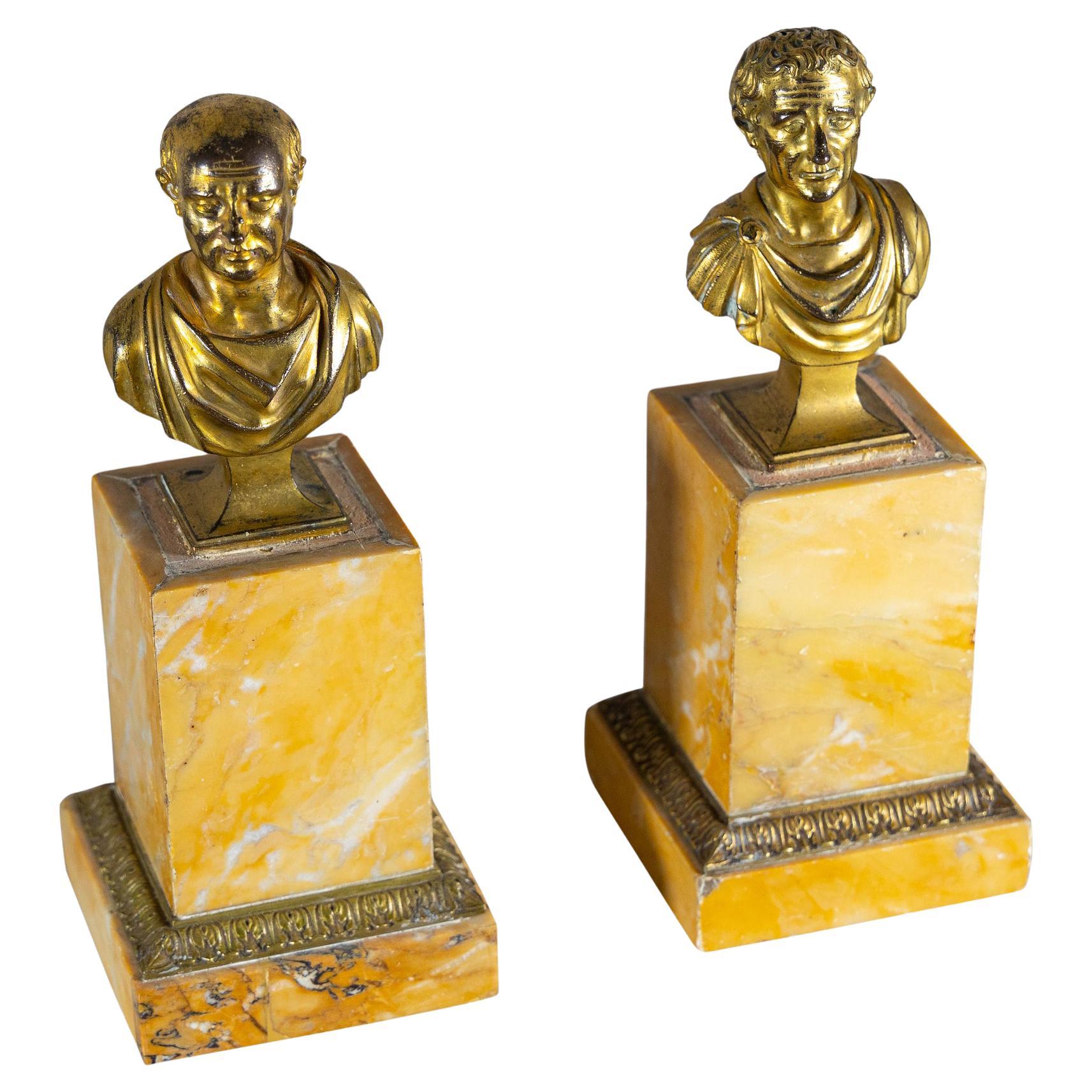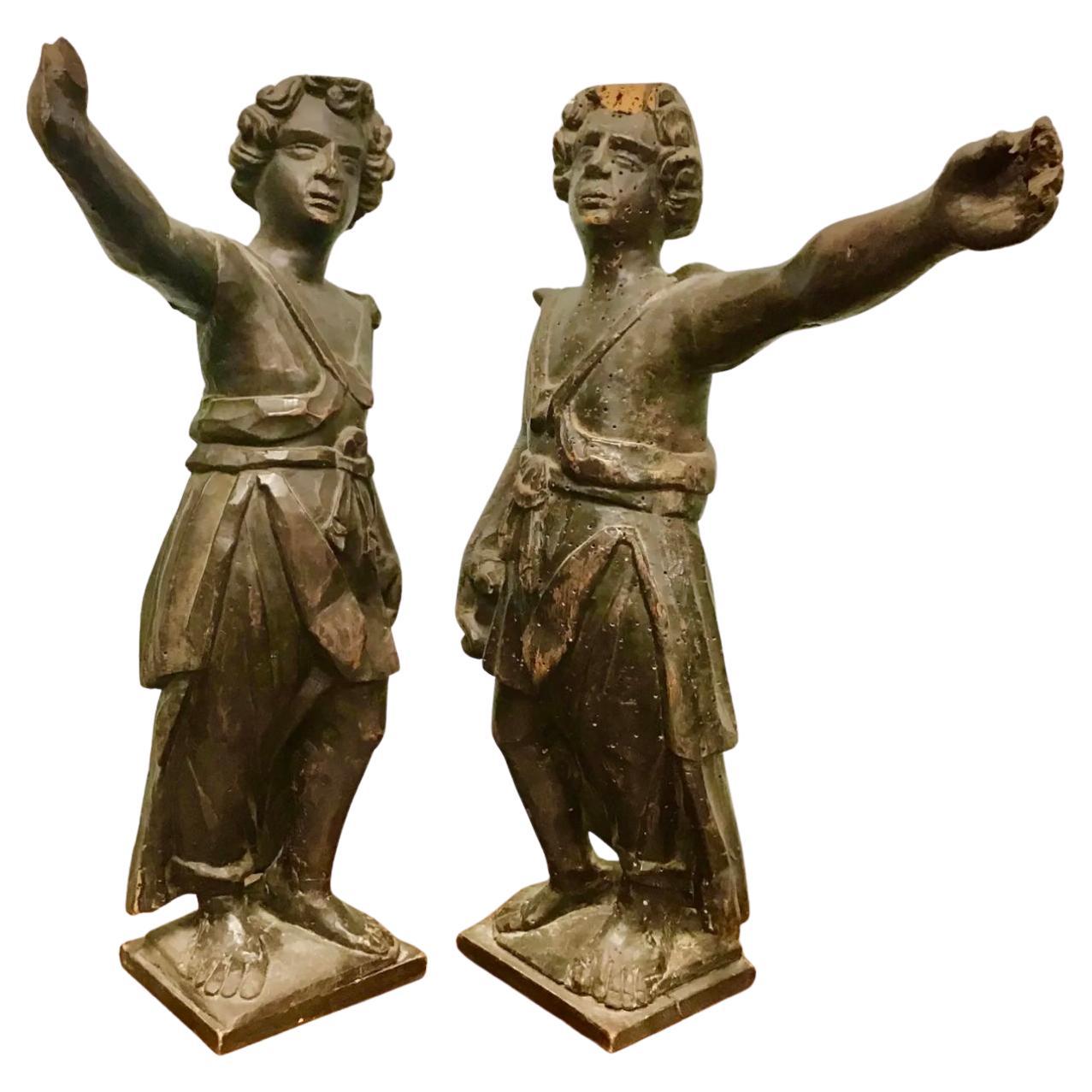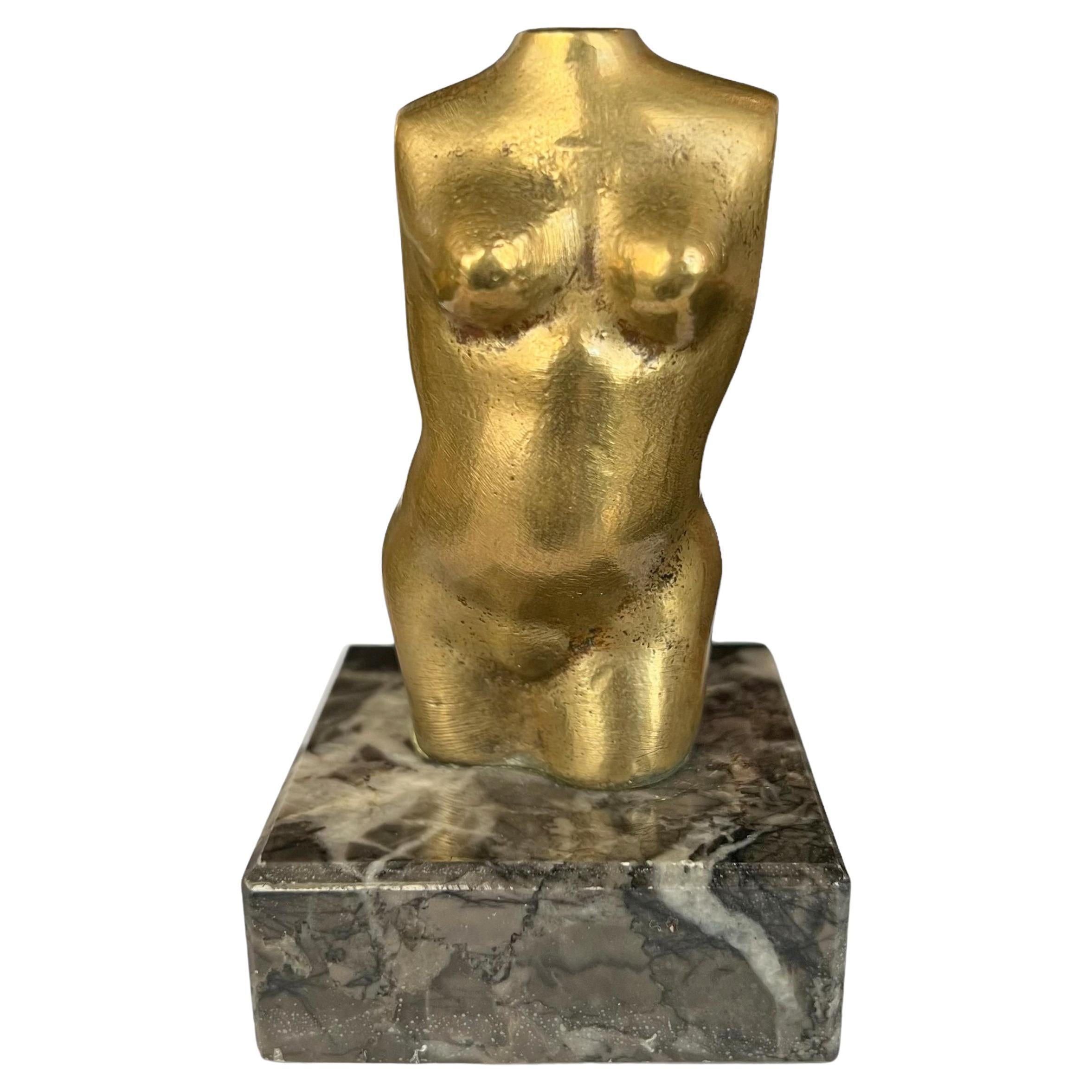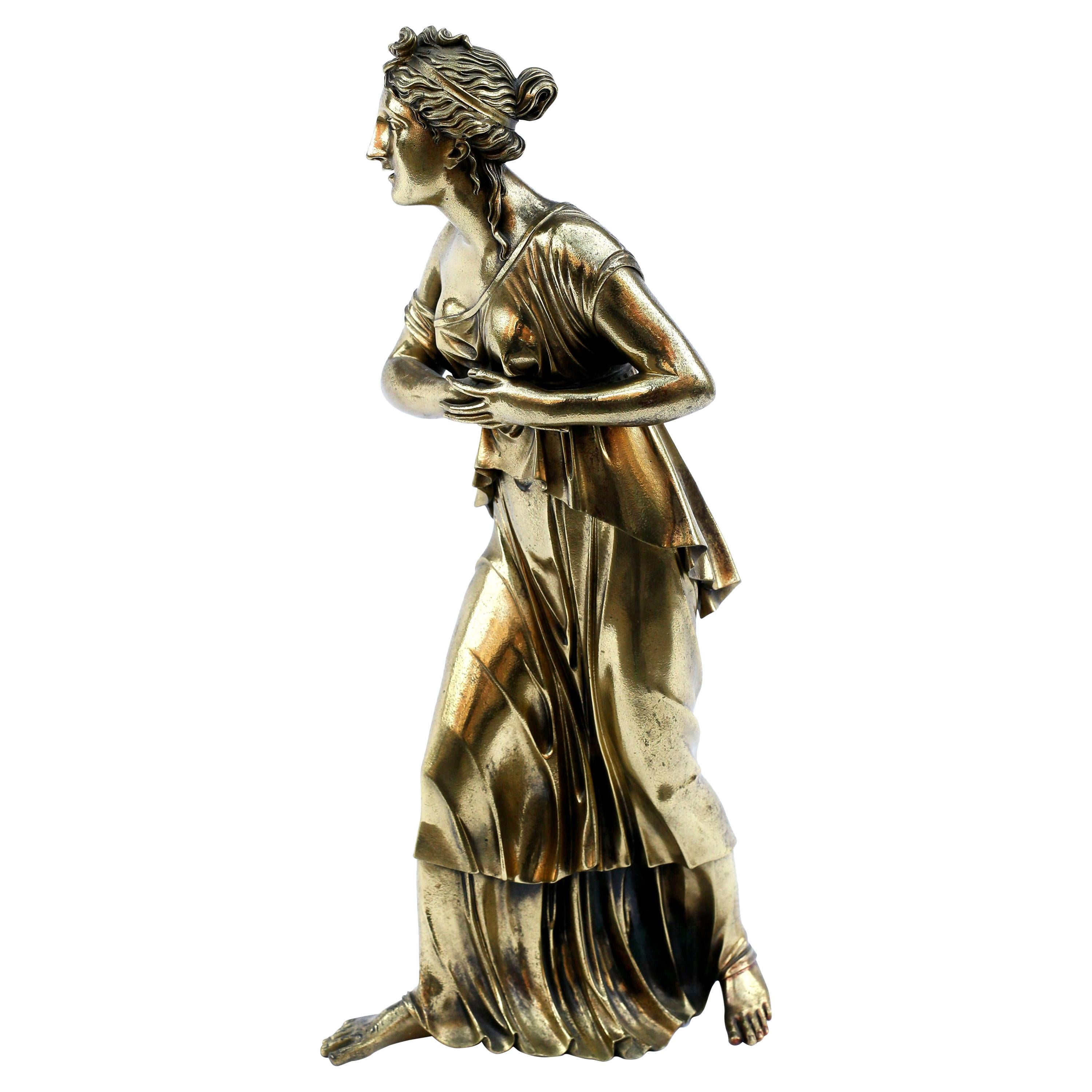Items Similar to 18th Century, Italian Bronze Sculpture with Venus Removing Her Sandal
Want more images or videos?
Request additional images or videos from the seller
1 of 17
18th Century, Italian Bronze Sculpture with Venus Removing Her Sandal
About the Item
18th Century, Italian Bronze Sculpture with Venus Removing Her Sandal
This bronze sculpture represents Venus as she takes off her sandal. Made in the neoclassical era in Italy, it consists of the bronze sculpture of the Greek goddess Aphrodite, Venus for the Romans. The naked goddess, getting ready for the bath, makes the very human gesture of loosing a sandal.
The left arm is raised, as if to compensate the position while maintaining the balance. Next to her, wrapped around a rocky spur, is a dolphin, an animal iconographically linked to the goddess because of his birth from the foam of the sea. The figure rests on a cylindrical and concave bronze base, with finely chiselled reserves. The bronze element is in turn resting on a africano marble cylinder with black of Belgium marble base.
Venus is one of the major Roman goddesses primarily associated with eros and beauty. It is traditionally understood as the equivalent of the Greek goddess Aphrodite, goddess of beauty, physical and passionate love, among the major deities of Olympus. His birth is due to a dramatic event: Uranus, Heaven, is mutilated by his son Cronus, who punishes him for the wrongs inflicted on his mother. The torn limbs of Uranus fall into the sea and fertilize the foam of the waves of the island of Cyprus. From the waves emerges in all its splendor Aphrodite. Since the 4th century, Aphrodite begins to be represented with characters more human and less heroic. Praxiteles with the 'Aphrodite Cnidia,' for the first time in the history of sculpture, depicts her naked, as she prepares to take a ritual bath.
From the Pressitele’s model descend the Capitoline Venus (Capitoline Museums of Rome) and the Venus de’ Medici (Uffizi Museum of Florence) accompanied by Eros on the back of a dolphin.
This vein also includes a subject frequently attested in the Hellenistic and then Roman Ages, with examples in bronze, marble and terracotta: the Aphrodite who fastens the sandal.
The luck that this type of representation had in the following centuries is demonstrated by the vast number of sculptures that represent it. In this bronze work the goddess resumes the position of Oplontis’s Naked Venus: here Venus holds an apple in her left hand, a reminder of her victory in the beauty contest in which she prevailed over Minerva and Juno by judgment of Paris. In our bronze instead, the hand seems to want to shake the apple, which however has not been molded. Perhaps the bronze is inspired by another work, such as the bronzes kept in the archaeological museum of Padua. Another example is the famous 'Venus in bikini" found in Pompeii, so-called because it depicts the goddess in the same pose, but with the breasts and hips covered by bands painted in gold.
The dolphin depicted next to it could be inspired instead to the Medici Venus, while the described hairstyle is closer to that of the Capitoline Venus: a complex hair with a knot high bow and locks hanging on the shoulders.
This sculpture therefore confirms the interest in neoclassical works of the Hellenistic and Roman ages, which were sometimes reinterpreted by the authors taking inspiration from several ancient examples.
Very decorative and of pleasant workmanship, proposes a subject still today much appreciated: Venus continues to be considered goddess of good luck, protector of falling in love and marriage.
- Dimensions:Height: 10.24 in (26 cm)Diameter: 3.15 in (8 cm)
- Style:Neoclassical (Of the Period)
- Materials and Techniques:
- Place of Origin:
- Period:
- Date of Manufacture:Late 18th Century
- Condition:
- Seller Location:IT
- Reference Number:1stDibs: LU4405218734362
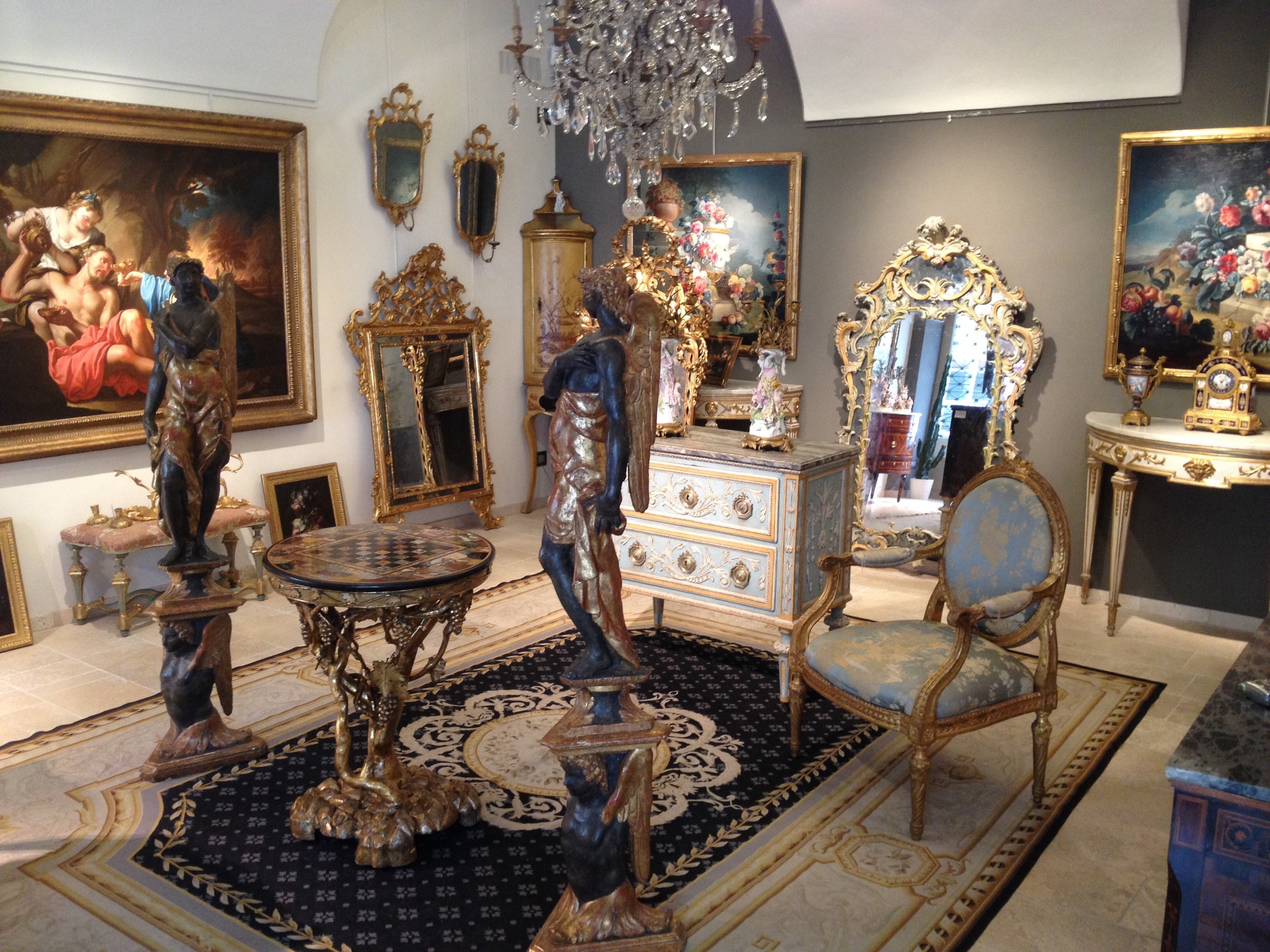
About the Seller
5.0
Platinum Seller
These expertly vetted sellers are 1stDibs' most experienced sellers and are rated highest by our customers.
Established in 1980
1stDibs seller since 2019
41 sales on 1stDibs
Typical response time: 1 hour
- ShippingRetrieving quote...Ships From: Italy
- Return PolicyA return for this item may be initiated within 7 days of delivery.
More From This SellerView All
- 18th Century Pair of French Gilt Bronze Sculptures on Marble BaseLocated in IT18th century pair of french gilt bronze sculptures on marble base representing Chinese figures This particular and lovely pair of sculp...Category
Antique Mid-18th Century French Louis XV Figurative Sculptures
MaterialsMarble, Bronze
- 18th Century Pair of Large Italian Neoclassical Gilt Bronze VasesLocated in IT18th century Pair of Large Italian Neoclassical Gilt Bronze Vases The pair of neoclassical vases was made in Italy in the end of 18th ce...Category
Antique Late 18th Century Italian Neoclassical Vases
MaterialsBronze
- 19th Century, Italian White Marble Sculpture by Pompeo Marchesi with Cupid, 1840Located in IT19th century, Italian white marble sculpture by Pompeo Marchesi with cupid, Italy, 1840 This valuable sculpture, made in white marble in 1840, is a work signed by Pompeo Marchesi....Category
Antique 1840s Italian Romantic Figurative Sculptures
MaterialsMarble
- 19th Century, Pair of French Empire Gilt and Patinated Bronze Sculptures SphinxeLocated in IT19th century, Pair of French Empire Gilt and Patinated Bronze Sculptures Sphinxes This pair of decorative elements was made in F...Category
Antique Early 19th Century French Empire Figurative Sculptures
MaterialsBronze
- 20th Century, Italian Sculpture by Helen König Scavini, Lenci ManufactoryBy Lenci, Helen ScaviniLocated in ITHelen König Scavini, Lenci manufactory "Nude of Woman", e.g. 1927-1936 Signed under the base "Lenci/Italy" Glazed terracotta sizes: H 70 cm x W front 83 cm (W back 55 cm) x D 55 cm The important sculpture, realized in glazed terracotta, is by the famous Lenci Manufactory of Turin (Italy) on model by Helen König Scavini. Of remarkable dimensions, it represents a naked woman, covered of a single cloth to life, sitting with the legs flexed asymmetrically while it supports on the arms with the hands leaned to the plan. The woman has a hieratic expression, big eyebrow arches under which the ethereal eyes are half-closed; the open lips hide a hint of a smile. The loose hair is turned back with big waves on both the head and along the back. The staining of the glazing is on the tones of musky green, which contributes to confer to this woman the appearance of a nymph or a mythological figure. Below the base is found, hand painted, the trademark of the manufacture "Lenci, ITALY". The brand Lenci was registered in Turin on 23 April 1919, sanctioning an activity undertaken some time before by Helen König, wife of the commercial agent Enrico Scavini. The origin of the word Lenci is still controversial today; the earliest bibliography says it derived from a endearment of Elena (Elenchen, as her father called her and that she, stunned him, pronounced Lenci) while the most recent one considers the acrostic Ludus Est Nobis Costanter Industria, perhaps invented by Ugo Ojetti or built as divertissement by the poet Ignazio Vacchetti (Alias Fantasio) on the endearment of Elena. The Lenci manufactory becomes a meeting point for artists and a forge of ideas for the development and realization of dolls and puppets, children’s furniture, and later also artistic ceramics. The first artists to take an active part in the enterprise were Giovanni Riva and Sandro Vacchetti, soon joined by other great names. The success of these felt dolls earned numerous awards to the Lenci Company during the international exhibitions in Zurich, Paris, Rome or Milan. However, the originality of Lenci’s creations was soon put to the test by numerous imitations. To cope with this type of competition, Lenci began to produce artistic ceramics, whose activity began in 1927. The ceramic figures became perhaps even more famous than the dolls in cloth. The subjects ranged from the famous "nudini", the chic little ladies and emancipated women, from fantasy characters to animals, from religious images to the most disparate vases and much more. Many artists collaborated in the realization of the models, among which it is worth mentioning the already mentioned Sandro Vacchetti, artistic director of Lenci from 1922-1934, the same Elena König Scavini, Cläre Burchart, Lino berzoini, Giovanni Riva, Giovanni Ronzan, Deabate Theonesto, Giovanni Pietro Spertini, Marcello Dudovich, Gigi Chessa, Mario Pompei, Nillo Beltrami, Mario Sturani, Giulio Da Milano, Giovanni Grande, Ines Grande, Claudia Formica, Luigi Borione, Camillo Ghigo, Giuseppe Porcheddu, Gino Levi-Montalcini, Abele Jacopi...Category
Vintage 1930s Italian Figurative Sculptures
MaterialsTerracotta
- 18th Century, Italian Neoclassical Lacquered Wood ConsoleLocated in ITLate 18th Century, Italian Neoclassical Lacquered Wood Console This elegant console was made in the neoclassical era, in the second half of the eighteenth century in Milan, Italy. T...Category
Antique Late 18th Century Italian Neoclassical Console Tables
MaterialsWood
You May Also Like
- Venus Pudica (Medici-type) - 18th century, ItalyLocated in Bruxelles, BEMonumental sculpture representing the Venus Pudica (Medici-type) 18th Century Italian (Rome) White marble Based on a model from Antiquity, the Medici Venus, currently in the Uffizi ...Category
Antique Early 18th Century Italian Grand Tour Figurative Sculptures
MaterialsMarble
- Bronze Busts, Italy 18th CenturyLocated in Greding, DEPair of small gold-patinated bronze busts of two ancient philosophers on Siena marble pedestals (added, 2nd half of 19th century).Category
Antique 18th Century Italian Busts
MaterialsSiena Marble, Bronze
- 18th Century Italian Carved Wood Sculptures, a PairLocated in Bradenton, FLBeautiful pair of antique carved figurines. Italian, circa 1780, the tall sculptures depict two men, probably soldiers, in flowing robes with one arm out stretched. The elegant fig...Category
Antique 18th Century Italian Neoclassical Figurative Sculptures
MaterialsWood
- 18th Century Italian Wooden SculptureLocated in High Point, NCThis 18th Century Italian Wooden Sculpture captivates with its rustic allure and storied past. Carved with a delicate yet masterful hand, it portrays the figure of a cherub, a timele...Category
Antique 18th Century Italian Figurative Sculptures
MaterialsWood
- 20th Century French Bronze Venus SculptureLocated in Chicago, ILThis 20th-century French gilt bronze "Venus" sculpture is a harmonious fusion of ancient inspiration and modernist aesthetics. The abstracted female torso, resplendent in gilded bron...Category
20th Century French Modern Figurative Sculptures
MaterialsBronze
- 18th Century Neoclassical Bronze Doré Sculpture of WomanLocated in Brooklyn, NYA masterful large classical statue in cast bronze of a beautiful young woman in stride wearing a flowing ionic chiton. The exquisite casting of ...Category
Antique Late 18th Century Italian Neoclassical Figurative Sculptures
MaterialsBronze
Recently Viewed
View AllMore Ways To Browse
Italian Bronze
Burnished Antique
18th Era Century
Marble Cylinder
Bronze 18th Italian
18th Century Italian Bronze
Black And Gold 18th Century Furniture
Sculpture Of Venus
Greek And Roman Sculptures
Belgian Neoclassical
Wrap Sandal
Roman Figure Sculpture
Medici Marble
Venus And Love
Marble Goddess
Bronze Figure 18th
Gold Hanging Sculpture
Italian Good Luck

